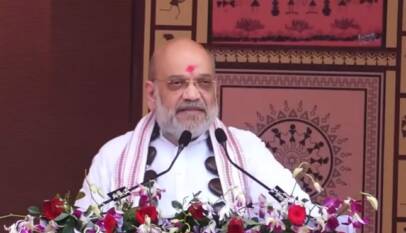Maha Kumbh 2025: Yogi government accelerates beautification of Akshayvat Corridor
Prayagraj : As preparations for Maha Kumbh 2025 gain momentum, the Yogi government is expediting the beautification of the sacred Akshayvat Corridor, aiming to enhance the spiritual experience for millions of pilgrims. Chief Minister Yogi Adityanath recently reviewed the progress of the ambitious beautification project and instructed officials to accelerate the work, ensuring the site is ready to welcome devotees.
Akshayvat, a 300-year-old tree of great mythological significance in Sanatan Dharma, is considered a crucial stop for pilgrims. It is believed that after bathing in the sacred waters of Sangam, one’s pilgrimage is complete only after offering prayers at Akshayvat. The blessings sought here are thought to fulfill the spiritual aspirations of devotees, making it a focal point for saints and pilgrims during the grand festival.
To provide a divine and renewed experience in Kumbhnagari, the state government has announced a significant budget. The aim is to showcase the grandeur of the holy city and emphasize its cultural and spiritual heritage as the Maha Kumbh approaches, with Akshayvat serving as a key center of faith for visitors.
When Lord Shri Ram visited Bharadwaj Muni’s ashram in Sangamnagari during his journey to the forest, Muni narrated the significance of the Banyan tree. Mother Sita blessed the Banyan tree, and it was the only tree to survive when the earth submerged during the deluge. This sacred tree is known today as Akshayvat.
Akshayvat is also mentioned in the Raghuvansh by the great poet Kalidas, as well as in the travelogue of the Chinese traveler Hiuen Tsang. It is believed that just seeing Akshayvat grants one Akshaya Punya (eternal virtue). India is home to four such ancient Banyan trees: Akshayvat in Prayagraj, Griddhavat in Soron (Shukarkshetra), Siddhavat in Ujjain, and Vanshivat in Vrindavan.
Akshayvat has witnessed centuries of challenges and revival. Located within Akbar’s fort on the banks of the Yamuna, public access to this sacred tree was restricted during the Mughal era. Even during British rule and after India’s independence, the fort remained under military control, making it rare for people to see the tree.
In 2018, the Yogi government lifted these restrictions, opening the path for devotees to visit and worship Akshayvat. The state government also approved several development projects to enhance pilgrimages to sites of mythological importance. As part of this, work on the Akshayvat Corridor is currently underway to improve access and beautify the area.
Swami Dilip Das Tyagi, head of Shri Ram Janaki Mahal in Ayodhya, shared the fascinating history of Akshayvat. He recounted that during the Mughal period, many attempts were made to destroy the tree by cutting and burning it, but Akshayvat would miraculously regenerate within a few months. Despite repeated efforts, the tree returned to its original form, symbolizing resilience and immortality.
Swami Tyagi praised the Yogi government’s beautification efforts, emphasizing that pilgrims will have the opportunity to experience spiritual blessings by visiting Akshayvat after bathing in the Sangam during the upcoming Maha Kumbh 2025.
Trade Tensions Escalate: China Strikes Back with 34% Tariff on All U.S. Imports
In a powerful retaliatory move, China announced it will impose a 34% tariff on all U.S. im…




















